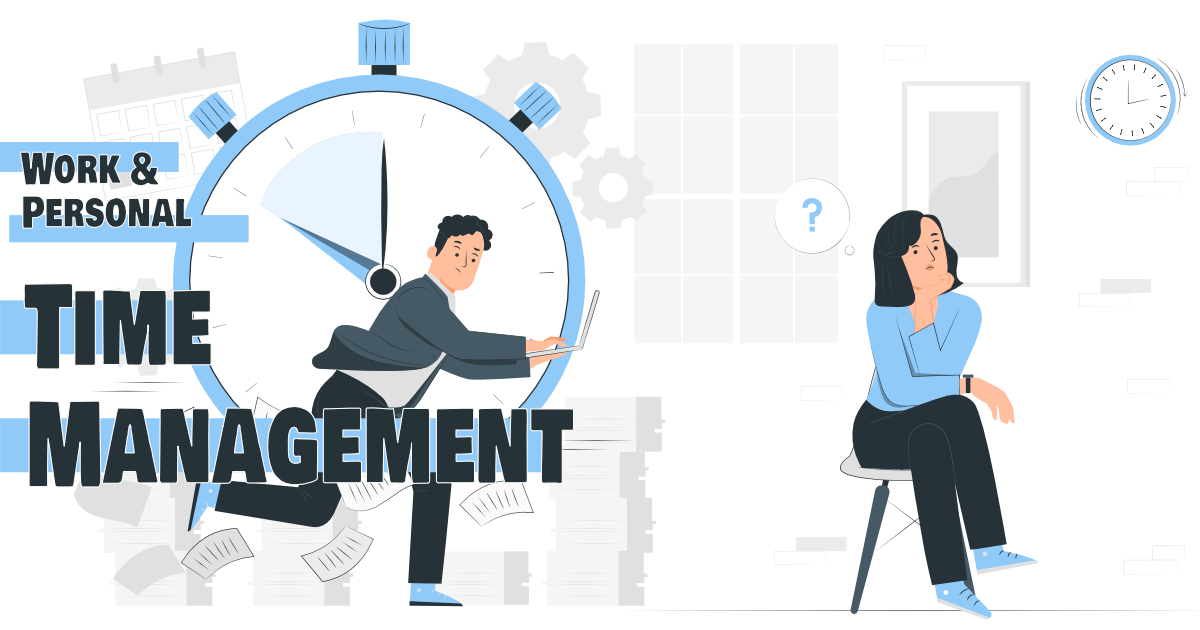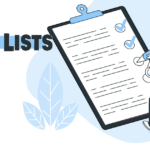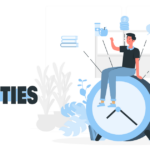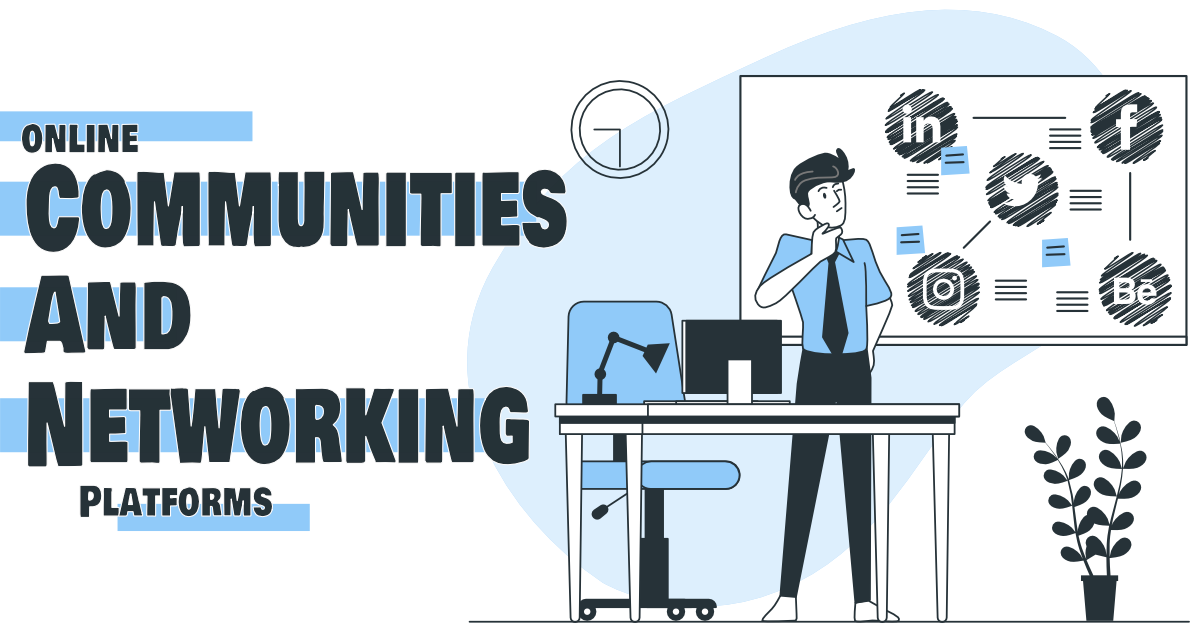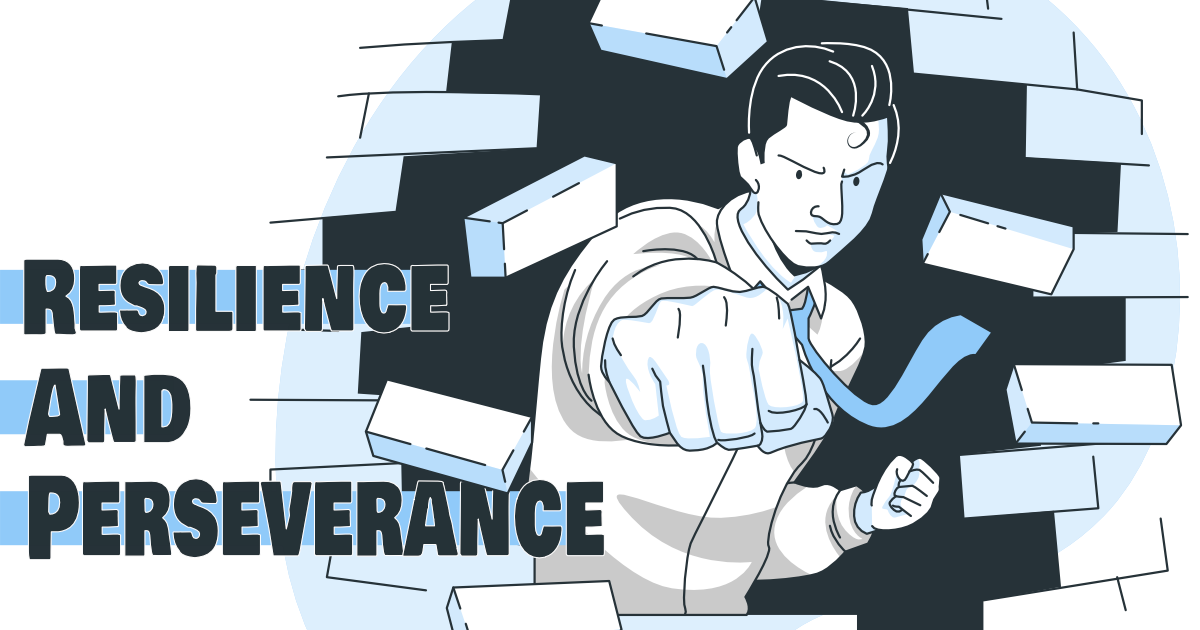Managing time for both work and personal life can be a challenge for many people. With increasing demands from work and personal life, it can be difficult to find a balance between the two. The sub-topic of “Managing time for both work and personal life” will explore ways to effectively balance time between work and personal activities, prioritize important tasks, and find a healthy work-life balance. This includes exploring strategies such as setting boundaries, prioritizing self-care, and finding time for hobbies and interests. By implementing these techniques, individuals can improve their overall well-being and increase productivity in both work and personal life.
Setting boundaries and creating a work-life balance
Balancing work and personal life can be a challenging task, especially with the rise of technology making it possible to work from anywhere at any time. However, it’s crucial to establish boundaries between work and personal life to avoid burnout and maintain a healthy lifestyle. In this article, we will discuss the importance of setting boundaries and the steps to create a work-life balance.
Setting boundaries between work and personal life is important because it helps in reducing stress, improving relationships, and maintaining a healthy lifestyle. It helps individuals to focus on what’s important, prioritize their responsibilities, and avoid burnout.
Step-by-Step Guide
- Define your priorities: Take a moment to reflect on what’s important to you in your personal and professional life. Make a list of your priorities and ensure that they align with your values and goals.
- Set boundaries: Decide on the hours you will work, when you will take breaks, and when you will unplug from work. For example, you can set a time limit on checking emails or avoid working during weekends.
- Communicate your boundaries: Let your colleagues, family, and friends know about your work schedule and availability. Be assertive and communicate your boundaries clearly.
- Maintain a work-life balance: Make time for your personal life and stick to your boundaries. Avoid overcommitting to work and prioritize activities that bring joy and relaxation to your life.
Examples and Real-Life Scenarios
- A salesperson who sets a rule to not check emails after 7 PM and on weekends to spend more time with their family.
- A software engineer who takes breaks every hour to avoid burnout and maintain a healthy work-life balance.
Best Practices and Tools
- Use a planner or calendar to schedule your work and personal activities.
- Make a habit of disconnecting from work during non-working hours.
- Set up an automatic out of office reply during non-working hours to avoid interruptions.
Actionable Tips
- Start small and gradually increase the boundaries you set.
- Set realistic boundaries that align with your priorities and values.
- Take breaks regularly and prioritize self-care activities.
Conclusion
Setting boundaries and creating a work-life balance is crucial for maintaining a healthy lifestyle and avoiding burnout. It’s important to define your priorities, set boundaries, communicate them clearly, and maintain the balance. By following these steps and using the best practices and tools, you can create a healthy balance between work and personal life.
Allocating dedicated time for work and personal activities
Managing time for both work and personal life is a delicate balance. Allocating dedicated time for each of these activities is an effective way to ensure that you are productive and have time for self-care and other personal responsibilities. By dedicating specific time slots for work and personal activities, you can avoid feeling overwhelmed and stressed, and ensure that you are productive and happy in both aspects of your life.
Step-by-Step Guide
- Identify key work and personal activities: Write down the tasks you need to complete for work and personal life. This can include tasks such as work meetings, household chores, personal errands, and self-care activities.
- Assess priorities: Evaluate the importance and urgency of each task and prioritize them based on their level of importance and urgency.
- Create a schedule: Use a calendar or planner to create a schedule that allocates dedicated time slots for work and personal activities. Make sure to leave some flexibility in your schedule to accommodate unexpected events or changes.
- Stick to the schedule: It’s important to stick to the schedule you have created to ensure that you are effectively managing your time.
- Reevaluate and adjust as needed: Regularly review your schedule and make adjustments as needed to ensure that it remains effective in managing your time for both work and personal life.
Actionable Tips
- Plan ahead: Plan out your schedule for the week ahead to ensure that you have dedicated time for both work and personal activities.
- Use time blocking: Dedicate specific time slots for specific activities, such as 30 minutes for household chores and an hour for self-care. This helps you prioritize your time and ensures that you allocate enough time for each activity.
- Take breaks: Regularly take breaks throughout the day to recharge and avoid burnout. This can be as simple as taking a walk, stretching, or meditating.
- Be flexible: Be open to adjusting your schedule as needed to accommodate changes in your work or personal life.
- Turn off distractions: Avoid distractions such as emails and social media while working or engaging in personal activities to ensure that you are focused and productive.
Conclusion
Allocating dedicated time for both work and personal activities is an effective way to manage your time and ensure that you have a healthy work-life balance. By prioritizing tasks, creating a schedule, and sticking to it, you can avoid feeling overwhelmed and stressed, and ensure that you are productive and happy in both aspects of your life.
Prioritizing self-care and leisure activities
Incorporating leisure and self-care activities into a busy schedule can be a challenge, but it’s essential to maintain a healthy work-life balance. Engaging in self-care activities can help improve overall well-being and reduce stress levels, while leisure activities provide a much-needed break from work and provide opportunities for personal growth and social connections. In this article, we will discuss the importance of prioritizing self-care and leisure activities and provide tips for making them a part of your daily routine.
Why is self-care and leisure important?
Self-care and leisure activities are essential for maintaining good physical and mental health. Engaging in leisure activities can provide a break from work, reducing stress and helping to prevent burnout. It also provides opportunities for personal growth and social connections, which can improve overall well-being. On the other hand, self-care activities, such as exercise, meditation, or reading, help to rejuvenate and refresh the mind and body, allowing you to be more productive and focused at work.
Step-by-step Guide
- Assess your current routine: Take a look at your daily routine and identify the areas where you can incorporate leisure and self-care activities.
- Set priorities: Decide which self-care and leisure activities are most important to you and prioritize them in your schedule.
- Make a schedule: Allocate specific times for self-care and leisure activities in your schedule. For example, you could dedicate 30 minutes each day to meditation or exercise, and allocate an hour each weekend for leisure activities such as reading or hobbies.
- Stick to the schedule: Make sure to stick to your schedule and prioritize self-care and leisure activities. This may mean saying no to work-related tasks or events if they clash with your designated self-care or leisure time.
- Review and adjust: Regularly review your schedule and make adjustments as needed to ensure that self-care and leisure activities remain a priority.
Actionable Tips
- Incorporate physical activity into your daily routine, such as going for a walk or doing a yoga session.
- Set aside time each day for a self-care activity, such as taking a relaxing bath or reading a book.
- Dedicate time each week to leisure activities, such as hobbies or social events.
- Make sure to take breaks throughout the day to rest and recharge.
- Try to disconnect from work and technology during leisure time.
Examples
- Allocating 30 minutes each day for meditation or exercise
- Dedicating an hour each weekend for a hobby or leisure activity, such as reading or photography.
- Setting aside time for a relaxing bath or massage each week.
- Taking a break from work and technology during leisure time to disconnect and recharge.
Conclusion
Incorporating self-care and leisure activities into your daily routine is essential for maintaining a healthy work-life balance and improving overall well-being. By setting priorities, making a schedule, and sticking to it, you can ensure that these activities remain a priority in your daily routine. Regularly reviewing and adjusting your schedule can help ensure that you are getting the most out of your leisure and self-care activities.
Maintaining a daily routine
Maintaining a daily routine can play a crucial role in managing time for both work and personal life. A well-planned routine helps to keep track of daily activities, reduces stress, and increases productivity. In this article, we will discuss the benefits of having a daily routine, the process of creating a routine, and how to maintain it.
Step-by-step Guide to Creating a Daily Routine
- Identify your priorities: The first step in creating a daily routine is to determine what is important to you. Consider your work, personal, and health goals, and prioritize them accordingly.
- Allocate time for each activity: Once you have identified your priorities, allocate a specific time for each activity. Make sure to include time for work, self-care, and leisure activities.
- Plan your schedule: Based on the time allocation, plan your schedule for each day. Consider the most productive times of the day and schedule your most important tasks during those times.
- Incorporate flexibility: It’s important to be flexible and make adjustments to your routine as needed. Allowing for unexpected events or changes in your schedule can help reduce stress and increase productivity.
- Use a planner or calendar: Use a planner or calendar to keep track of your daily routine. This can help you stay organized and on track.
- Evaluate and adjust: Regularly evaluate your routine to see if it is working for you. Make any necessary adjustments to better suit your needs and goals.
Examples and Best Practices
- Set aside a specific time for self-care activities such as exercise, meditation, or reading.
- Plan your work schedule around your most productive times. If you are a morning person, schedule your most important tasks for the morning and save less important tasks for later in the day.
- Dedicate a specific time for leisure activities, such as watching a movie or spending time with family and friends.
- Incorporate breaks throughout the day to avoid burnout and increase productivity.
Actionable Tips
- Start small: Creating a daily routine can seem overwhelming, so start with small steps and gradually increase the number of activities in your routine.
- Be consistent: Stick to your routine as much as possible. Consistency is key to making a routine effective.
- Use a timer: Set a timer for each activity to stay focused and avoid distractions.
- Make adjustments as needed: Regularly evaluate and adjust your routine to ensure it is working for you.
Conclusion
Having a daily routine can be a valuable tool in managing time for both work and personal life. By setting boundaries, dedicating time for important activities, and incorporating self-care and leisure, you can increase productivity and maintain a healthy work-life balance. Regular evaluation and adjustments can help ensure your routine is effective and meeting your needs.
Staying organized and avoiding overscheduling
Managing time for both work and personal life requires a significant effort to maintain a balance. One of the key aspects of this balance is staying organized and avoiding overscheduling. When you have a lot of commitments, it can be challenging to stay on top of everything, but with proper planning and organization, it is possible to ensure that you have enough time for everything that matters to you.
Step-by-Step Guide
- Assess your schedule: Start by evaluating your current schedule and identify what you can cut out. Look for activities that are not essential or that you can delegate to others.
- Set Priorities: Decide what is most important to you and prioritize these activities. It is essential to make time for the things that matter most to you, both at work and in your personal life.
- Create a To-Do List: Write down all the tasks you need to complete and prioritize them based on their importance. Use a planner or a digital tool to help you keep track of your tasks and deadlines.
- Use Time Blocking: Allocate specific blocks of time for different tasks and stick to them as much as possible. This will help you stay focused and avoid multitasking, which can be a significant time waster.
- Limit Distractions: Turn off notifications, put your phone on silent, and close unnecessary tabs or apps while you are working. These distractions can take up a lot of time and make it challenging to stay focused.
- Learn to say “No”: It is okay to decline invitations or opportunities that do not align with your priorities. Saying “no” can be difficult, but it is essential to protect your time and energy.
- Review and adjust your schedule regularly: Regularly evaluate your schedule and make adjustments as needed. This will help you stay on top of your commitments and avoid overscheduling.
Examples
- A software developer who prioritizes work tasks and sets specific blocks of time for coding, testing, and debugging can stay focused and increase their productivity.
- A busy mom who uses a planner to keep track of her family’s schedule and sets aside dedicated time for self-care and leisure activities can maintain a work-life balance.
Best Practices
- Start each day with a clear plan and prioritize your most important tasks.
- Set aside dedicated time for self-care, such as exercise or meditation.
- Use a planner or a digital tool to keep track of your tasks and deadlines.
- Limit distractions and avoid multitasking to increase your focus and productivity.
Tools
- Trello
- Todoist
- Google Calendar
- Asana
Actionable Tips
- Set aside dedicated time for work and personal activities, and stick to your schedule as much as possible.
- Prioritize self-care and leisure activities to recharge and maintain a work-life balance.
- Use a planner or a digital tool to help you stay organized and on top of your tasks.
- Regularly evaluate your schedule and make adjustments as needed.
Conclusion
Managing time for both work and personal life requires a significant effort to maintain a balance. Staying organized and avoiding overscheduling is essential to ensure that you have enough time for everything that matters to you. By setting boundaries, prioritizing self-care and leisure activities, using time blocking, and regularly evaluating your schedule, you can achieve a better work-life balance and increase your overall productivity and well-being.
Incorporating technology and tools to manage time
In the fast-paced world of today, technology has become an indispensable part of our daily lives. The same applies to time management, as technology can greatly assist individuals in better organizing and optimizing their time. In this article, we’ll discuss various technological tools and solutions that can help manage time effectively, and improve work-life balance.
What and Why?
Using technology and tools to manage time is essential to remain productive and efficient in today’s world. These tools automate many time-consuming tasks and provide a more organized and streamlined way of managing time. Moreover, these tools can help track time spent on tasks, set reminders and deadlines, prioritize tasks, and much more.
Step-by-Step Guide
- Choose the right tool: There are various time management tools available in the market, including to-do lists, calendars, project management software, and time tracking apps. Determine what type of tool suits your needs, based on the nature of your work and your personal preferences.
- Automate repetitive tasks: Many tools allow for automation of repetitive tasks, such as sending emails, setting reminders, and scheduling appointments. Automating these tasks saves time and reduces the risk of forgetfulness.
- Set reminders and deadlines: Tools like calendars, reminders, and project management software, can help you set deadlines for tasks and remind you of important dates and events.
- Track time spent on tasks: Time tracking apps are an excellent way to monitor how much time is spent on specific tasks and identify areas where time can be optimized.
- Prioritize tasks: Using tools like to-do lists, project management software, and calendars can help prioritize tasks based on importance and urgency.
Actionable Tips
- Regularly review and adjust your time management strategies and tools to ensure that they are working effectively.
- Turn off notifications for non-essential apps and emails during specific times to minimize distractions.
- Use tools that integrate with other apps, such as email and calendars, to create a seamless time management experience.
Conclusion
Technology has revolutionized the way we manage time, providing us with powerful tools and solutions to optimize our work-life balance. Incorporating technology and tools in our time management strategies can help us be more productive, efficient, and organized. However, it’s essential to choose the right tool, set reminders and deadlines, track time spent on tasks, prioritize tasks, and regularly review and adjust strategies to ensure that they are working effectively.
Seeking support from family and friends
Balancing work and personal life is a challenge that affects many people. To achieve a harmonious balance, it is crucial to seek support from loved ones and seek out resources that can help.
Step-by-Step Guide
- Identify areas where support is needed: Identify which areas of your life you need the most support in. For example, you may need someone to help with household chores, or you may need a shoulder to lean on during difficult times.
- Communicate with loved ones: Explain your needs to your loved ones and ask for their support. Be honest and open about your struggles and the areas where you need help.
- Build a support network: Surround yourself with a network of friends, family members, and co-workers who can offer support and encouragement. This network can provide the emotional, practical, and professional support needed to help balance work and personal life.
- Seek out resources: Take advantage of resources such as online forums, support groups, or counseling services to help manage stress and maintain a healthy work-life balance.
Examples
- A busy single parent may seek support from family members to help with child care, allowing them to focus on work without having to worry about the children.
- An employee who is struggling to manage work and personal responsibilities may seek the support of a coach or counselor to help find a better balance.
Best Practices
- Be specific about what you need and how others can help.
- Be open to feedback and suggestions from your support network.
- Offer support and encouragement to others who are also seeking balance.
Tools
- Time management apps such as Google Calendar and Trello can help you organize your day and keep track of tasks.
- Stress management apps such as Headspace and Calm can provide relaxation techniques and mindfulness exercises to help manage stress.
Actionable Tips
- Schedule regular check-ins with loved ones to touch base and receive support.
- Plan fun and relaxing activities with friends and family to maintain a healthy work-life balance.
- Take advantage of flexible work arrangements and telecommuting options to make it easier to manage work and personal responsibilities.
Conclusion
Seeking support from loved ones and taking advantage of resources can help you achieve a healthy work-life balance. Building a supportive network and taking steps to manage stress can help you stay focused, productive, and fulfilled in both your professional and personal life.
Communicating expectations and responsibilities with coworkers and family
Maintaining a work-life balance can be challenging, especially when you have multiple responsibilities both at work and home. It becomes crucial to communicate your expectations and responsibilities with coworkers and family, to ensure that everyone is aware of their respective roles and to avoid any misunderstandings. This article will guide you through the process of communicating your expectations and responsibilities effectively.
Step-by-Step Guide
- Identify your expectations and responsibilities: The first step towards effective communication is to understand your own expectations and responsibilities. Make a list of the tasks and activities you need to accomplish and the amount of time you need for each of them. This will give you a clear picture of what you need to communicate to others.
- Choose the right time and place: Timing is crucial when it comes to communication. Choose a time when you and the person you’re communicating with are relaxed and free from distractions. Find a quiet place where you can have a private conversation and avoid any interruptions.
- Be clear and specific: When communicating your expectations and responsibilities, be clear and specific about what you need. Use concrete examples to help the other person understand your needs better. For example, instead of saying “I need more time for myself,” say “I need to finish my work by 5 PM, so I can have an hour of downtime before dinner.”
- Listen actively: Effective communication is a two-way street. Listen actively to what the other person has to say and be open to their perspective. Avoid interrupting or becoming defensive when they express their views.
- Find common ground: Try to find common ground with the other person and find a solution that works for both of you. For example, you may agree to work late on some days to make up for the extra time you need for personal activities.
- Follow up: After the conversation, follow up to ensure that the agreed-upon expectations and responsibilities are being met. This will help to avoid any misunderstandings in the future.
Best Practices
- Be honest and transparent: Honesty is the best policy when it comes to communication. Be transparent about your needs and be honest about your expectations and responsibilities.
- Be respectful: Show respect for the other person’s perspective and avoid being confrontational.
- Be flexible: Be open to making changes and be flexible in finding solutions that work for both of you.
- Use humor: Humor can help diffuse tense situations and make the conversation more relaxed and enjoyable.
- Use “I” statements: Instead of blaming or accusing the other person, use “I” statements to express your feelings and needs. For example, instead of saying “you never listen to me,” say “I feel unheard when you interrupt me.”
Actionable Tips
- Schedule regular check-ins: Schedule regular check-ins with coworkers and family to ensure that everyone is on the same page and that expectations and responsibilities are being met.
- Keep written records: Keep written records of the agreements made during your communication. This will help to avoid any misunderstandings in the future.
- Use technology: Use technology, such as calendars and project management tools, to keep track of your expectations and responsibilities and to communicate them with others.
Examples
- Suppose you’re a manager who’s been assigned a critical project at work and also have young children who require a lot of attention. You need to manage both work and family time effectively. To do this, you could set a work schedule, set aside time for your children, and communicate your schedule and expectations to both coworkers and family members. This way, you can ensure that you have dedicated time for both work and personal activities, while also being able to attend to any emergencies that may arise.
- Imagine that you’re a freelance graphic designer who works from home. You find it challenging to balance work and personal time, as you tend to get engrossed in work projects and end up working late into the night. To manage your time more effectively, you could allocate dedicated time for work and personal activities, prioritize self-care and leisure activities, and maintain a daily routine. You could also use technology tools, such as time management apps and calendars, to stay organized and avoid overscheduling. Additionally, you could seek support from family and friends to help manage the demands of work and personal life.
- Let’s say you’re a busy student who also works part-time. You find it difficult to balance schoolwork, work, and personal time. To manage your time more effectively, you could allocate dedicated time for each activity, prioritize self-care and leisure activities, and maintain a daily routine. You could also use technology tools, such as to-do lists and calendars, to stay organized and avoid overscheduling. Seeking support from family and friends can also be helpful in managing the demands of school, work, and personal life.
Conclusion
Balancing work and personal life is essential for overall well-being and success in both areas. By setting boundaries, allocating dedicated time, prioritizing self-care, maintaining a daily routine, staying organized, using technology and tools, seeking support, and communicating expectations, individuals can manage their time effectively and find the right balance for them. It is important to continually evaluate and adjust approaches to ensure that the balance remains effective and enjoyable. By incorporating these techniques and best practices, individuals can lead a fulfilling life both at work and at home.
Staying focused and avoiding distractions
Distractions are inevitable in today’s world, with a constant influx of information and the availability of multiple sources of entertainment. However, staying focused is crucial for productive work and achieving personal and professional goals. In this article, we will explore various strategies to avoid distractions and maintain focus.
Step 1: Identify the sources of distractions
The first step in avoiding distractions is to understand what they are and what triggers them. Common sources of distractions include social media, email notifications, interruptions from coworkers or family members, and personal distractions such as daydreaming.
Step 2: Establish a designated work environment
Designating a specific work environment and setting boundaries with others can help minimize distractions. For instance, closing the door, using noise-cancelling headphones, or working in a separate room can help minimize interruptions.
Step 3: Utilize technology to block distractions
Several tools and applications are available to block distractions such as websites, social media platforms, or even emails. Popular tools include Focus@Will, Freedom, and Cold Turkey.
Step 4: Implement the Pomodoro Technique
The Pomodoro Technique is a time management method that involves working for a specific period, typically 25 minutes, and taking short breaks in between. This method helps to maintain focus and avoid distractions by breaking down work into smaller, manageable tasks.
Step 5: Practice mindfulness
Mindfulness is the practice of being present and aware of one’s thoughts, feelings, and surroundings. It can help to avoid distractions by improving focus and reducing stress. Mindfulness can be practiced through meditation, deep breathing exercises, or yoga.
Step 6: Prioritize tasks
By prioritizing tasks and focusing on the most important ones first, individuals can avoid distractions and stay focused on their goals. Making a to-do list or using a project management tool can also help with task prioritization.
Step 7: Take regular breaks
Taking regular breaks to rest and recharge is crucial for maintaining focus and avoiding distractions. This can involve taking a walk, stretching, or engaging in a leisure activity such as reading a book or listening to music.
Best Practices
- Minimize interruptions by setting boundaries with others and creating a designated work environment
- Use technology to block distractions
- Prioritize tasks and focus on the most important ones
- Practice mindfulness and take regular breaks
Examples
- A software developer who regularly checks email notifications and social media while working can use the Pomodoro Technique and focus-enhancing tools to avoid distractions and stay focused.
- A teacher who is frequently interrupted by students can set boundaries by closing the door during class hours and minimizing interruptions from personal devices.
- An individual who struggles with daydreaming can practice mindfulness exercises to improve focus and avoid distractions.
Conclusion
Staying focused and avoiding distractions is essential for productivity and achieving personal and professional goals. By following the steps outlined in this article, individuals can minimize distractions and improve focus. Regularly practicing mindfulness, taking breaks, and using technology can also aid in maintaining focus. Staying focused is an ongoing process, and it is important to continuously evaluate and adjust approaches to stay on track.
Continuously evaluating and adjusting approaches for balance and effectiveness
Balancing work and personal life is an ongoing process and requires continuous evaluation and adjustment to ensure that it remains effective. It is essential to regularly assess and reflect on how well the strategies and techniques used to manage time are working and make any necessary changes to improve the work-life balance.
Step-by-Step Guide
- Reflect on current strategies: Take some time to think about the techniques and approaches that have been implemented to balance work and personal life. Consider whether they have been successful in achieving the desired balance or if they need to be adjusted.
- Set measurable goals: Identify specific, measurable goals for work and personal life and determine how to track progress towards these goals. This could include setting a specific number of hours for personal activities or tracking the number of days off taken in a month.
- Evaluate progress: Regularly evaluate progress towards the goals set and assess the effectiveness of the strategies and techniques used. This can be done through self-reflection, tracking progress, or seeking feedback from family, friends, or coworkers.
- Make adjustments: Based on the evaluation, make any necessary adjustments to the strategies and techniques used to balance work and personal life. This could include modifying schedules, seeking additional support, or incorporating new tools or technologies.
- Stay flexible: It is important to remain flexible and open to making changes as needed. The work-life balance is a constantly evolving process, and what works well today may not be effective in the future.
Best Practices
- Regularly schedule time for self-reflection and evaluation
- Set realistic and achievable goals
- Seek feedback from others to gain a different perspective
- Be willing to try new approaches and techniques
Actionable Tips
- Use a journal or planner to track progress towards goals
- Take advantage of technology, such as apps or software, to automate tracking and evaluation
- Set aside time for regular check-ins with family, friends, or coworkers to discuss work-life balance
- Seek the support of a therapist or coach to help evaluate and adjust approaches
Real-Life Scenario
John is a software developer who has recently started working from home due to the pandemic. He is finding it challenging to balance work and personal life as he is spending longer hours in front of his computer. John decides to set a goal of taking one day off per week to focus on personal activities and evaluates his progress towards this goal every month. He also seeks feedback from his partner on how he can improve his work-life balance. Through regular reflection and adjustment, John is able to find a better balance between work and personal life.
Conclusion
Maintaining a healthy work-life balance requires continuous evaluation and adjustment. It is essential to regularly assess the effectiveness of strategies and techniques used to manage time and make any necessary changes. By setting realistic goals, seeking feedback, and remaining flexible, individuals can continuously improve their work-life balance and find a balance that works for them.
Resources and References
- “The 4-Hour Work Week” by Timothy Ferriss
- “Boundaries: When to Say Yes, How to Say No To Take Control of Your Life” by Henry Cloud and John Townsend
- “The Power of Full Engagement: Managing Energy, Not Time, is the Key to High Performance and Personal Renewal” by Jim Loehr and Tony Schwartz
- “The 7 Habits of Highly Effective People: Powerful Lessons in Personal Change” by Stephen Covey
- “The Power of Now: A Guide to Spiritual Enlightenment” by Eckhart Tolle
- “The Power of Habit: Why We Do What We Do in Life and Business” by Charles Duhigg
- “Atomic Habits: An Easy & Proven Way to Build Good Habits & Break Bad Ones” by James Clear
- “Getting Things Done: The Art of Stress-Free Productivity” by David Allen
- “Never Split the Difference: Negotiating As If Your Life Depended On It” by Chris Voss
- “Deep Work: Rules for Focused Success in a Distracted World” by Cal Newport
- “The Pomodoro Technique: The Acclaimed Time-Management System That has Transformed How We Work” by Francesco Cirillo
- “The Life-Changing Magic of Not Giving a F**k: How to Stop Spending Time You Don’t Have with People You Don’t Like Doing Things You Don’t Want to Do” by Sarah Knight.
